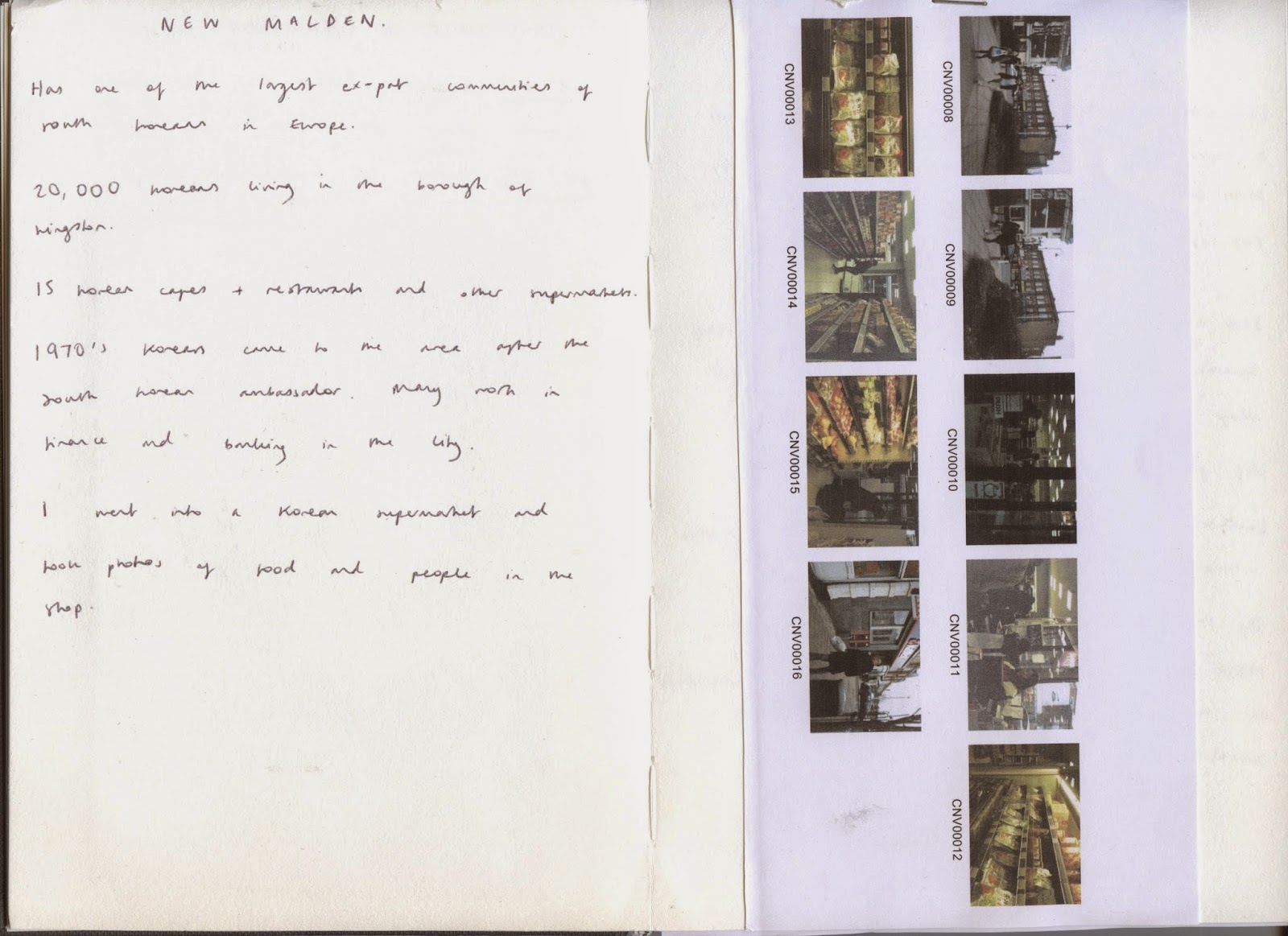Tuesday, 27 January 2015
Sunday, 25 January 2015
Analogue photography
I have decided to use only analogue photography for this project, not only do I prefer the look to film rather than digital but I also enjoy the idea of creating something tactile with every photo I take . I prefer to really think about the composition of the photo I'm about to take rather than alter it in post production. I mostly use a 35mm Olympus trip which is a small point and shoot, allowing me to capture things quickly and discreetly.
Analogue photography is photography that uses a progressively changing recording medium, which may be either chemical process based (e.g., photographic film or plate) or electronic (e.g., vidicon or CCD sensor).
In colour photography, electronic sensors or light-sensitive chemicals record colour information at the time of exposure. This is usually done by analysing the spectrum of colours into three channels of information, one dominated by red, another by green and the third by blue, in imitation of the way the normal human eye senses colour. The recorded information is then used to reproduce the original colours by mixing various proportions of red, green and blue light (RGB colour, used by video displays, digital projectors and some historical photographic processes), or by using dyes or pigments to remove various proportions of the red, green and blue which are present in white light (CMY colour, used for prints on paper and transparencies on film).
In photography, the 35 mm equivalent focal length is a measure that indicates the angle of view of a particular combination of a camera lens and film or sensor size.
The 35 mm equivalent focal length is based on equal diagonal angle of view.Alternatively, it may sometimes be based on horizontal angle of view. Since 35 mm film is normally used for images with an aspect ratio (width-to-height ratio) of 3:2, while many digital cameras have a 4:3 aspect ratio, which have different diagonal-to-width ratios, these two definitions are often not equivalent.
35 mm equivalent focal lengths typically ignore depth of field, which depends on both focal length and aperture. The perceived depth of field of smaller sensors is deeper due to the shorter focal length lenses.
The Olympus Trip 35 is a point and shoot model with a 40mm f2.8 lens, solar-powered selenium light meter, and just two shutter speeds. Apart from a simple four-position zone focus system, and an ISO setting from 25–400, the camera has no other photographic controls.
A point-and-shoot camera, also called a compact camera, is a still camera designed primarily for simple operation. Most use focus free lenses or autofocus for focusing, automatic systems for setting the exposure options, and have flash units built in.
In photography, a viewfinder is what the photographer looks through to compose, and in many cases to focus, the picture. Most viewfinders are separate, and suffer parallax, while the single-lens reflex camera lets the viewfinder use the main optical system.
Analogue photography is photography that uses a progressively changing recording medium, which may be either chemical process based (e.g., photographic film or plate) or electronic (e.g., vidicon or CCD sensor).
In colour photography, electronic sensors or light-sensitive chemicals record colour information at the time of exposure. This is usually done by analysing the spectrum of colours into three channels of information, one dominated by red, another by green and the third by blue, in imitation of the way the normal human eye senses colour. The recorded information is then used to reproduce the original colours by mixing various proportions of red, green and blue light (RGB colour, used by video displays, digital projectors and some historical photographic processes), or by using dyes or pigments to remove various proportions of the red, green and blue which are present in white light (CMY colour, used for prints on paper and transparencies on film).
In photography, the 35 mm equivalent focal length is a measure that indicates the angle of view of a particular combination of a camera lens and film or sensor size.
The 35 mm equivalent focal length is based on equal diagonal angle of view.Alternatively, it may sometimes be based on horizontal angle of view. Since 35 mm film is normally used for images with an aspect ratio (width-to-height ratio) of 3:2, while many digital cameras have a 4:3 aspect ratio, which have different diagonal-to-width ratios, these two definitions are often not equivalent.
35 mm equivalent focal lengths typically ignore depth of field, which depends on both focal length and aperture. The perceived depth of field of smaller sensors is deeper due to the shorter focal length lenses.
The Olympus Trip 35 is a point and shoot model with a 40mm f2.8 lens, solar-powered selenium light meter, and just two shutter speeds. Apart from a simple four-position zone focus system, and an ISO setting from 25–400, the camera has no other photographic controls.
A point-and-shoot camera, also called a compact camera, is a still camera designed primarily for simple operation. Most use focus free lenses or autofocus for focusing, automatic systems for setting the exposure options, and have flash units built in.
In photography, a viewfinder is what the photographer looks through to compose, and in many cases to focus, the picture. Most viewfinders are separate, and suffer parallax, while the single-lens reflex camera lets the viewfinder use the main optical system.
Saturday, 24 January 2015
Photoshoot in Shepherds Bush, London
After this photoshoot I have decided that I want to shoot in colour instead of black and white. Although I do like this series of images as you can subtly see the people and market of Shepherds bush, I feel that through photographing in colour, it will pick up the vibrant colours in the market, for example bright fabrics and signs. I will also be using a faster ISO film, as the pictures are quite underexposed.
Thursday, 22 January 2015
Monday, 19 January 2015
Subscribe to:
Comments (Atom)










